Magazine

May 11, 2019
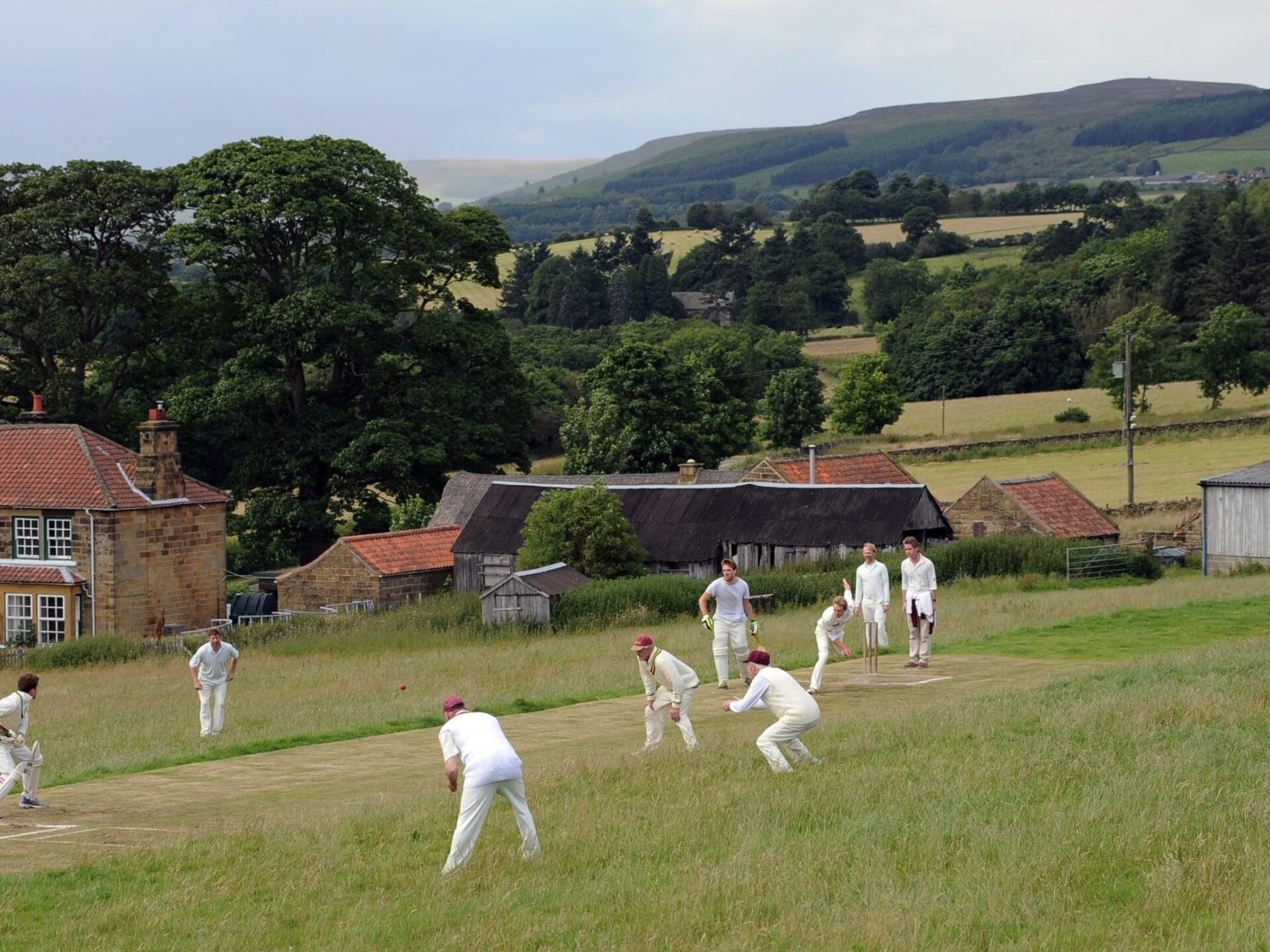
This article was originally published in Populous Magazine, our biannual publication featuring news, information, and trends from the worlds of sport, entertainment, and major public events. Find out more, and sign up to receive a free copy, here.
In honour of England’s remarkable Cricket World Cup win, Brian Levison (author of Remarkable Cricket Grounds) selects his First XI of the quirkiest, most beautiful and quintessentially English cricket grounds.
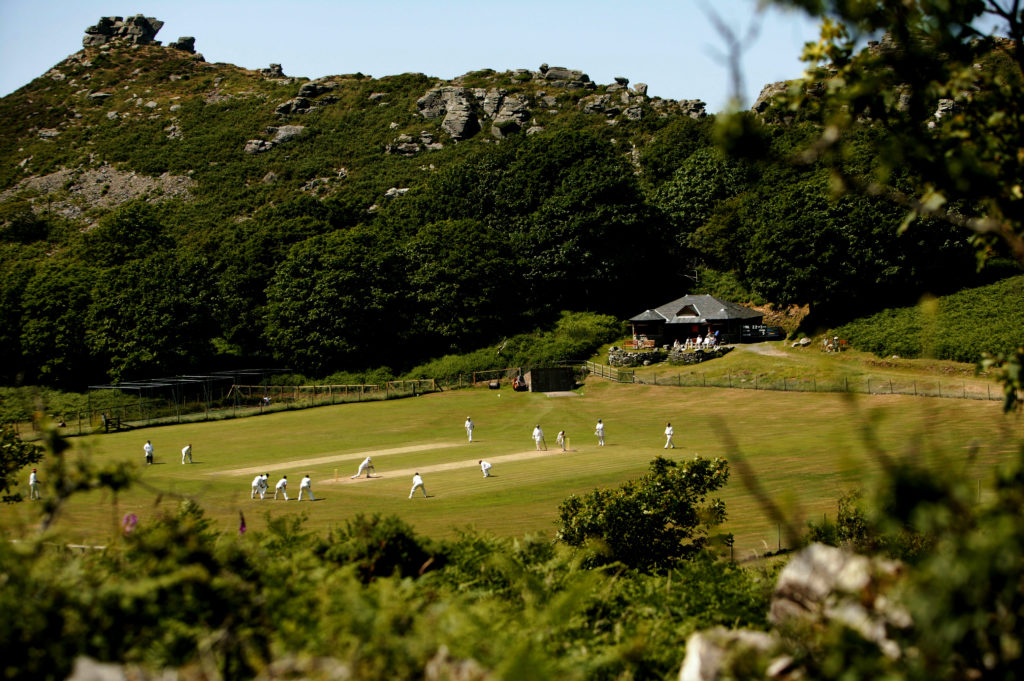
In the magnificent Valley of the Rocks, near the edge of Exmoor and close to the north Devon coast, this club has an unusual setting. The 400-million-year-old rock formations were the setting for parts of R. D. Blackmore’s famous novel Lorna Doone. Feral goats, badgers and foxes are common, forcing the club to keep them at bay with fencing – but only with moderate success.
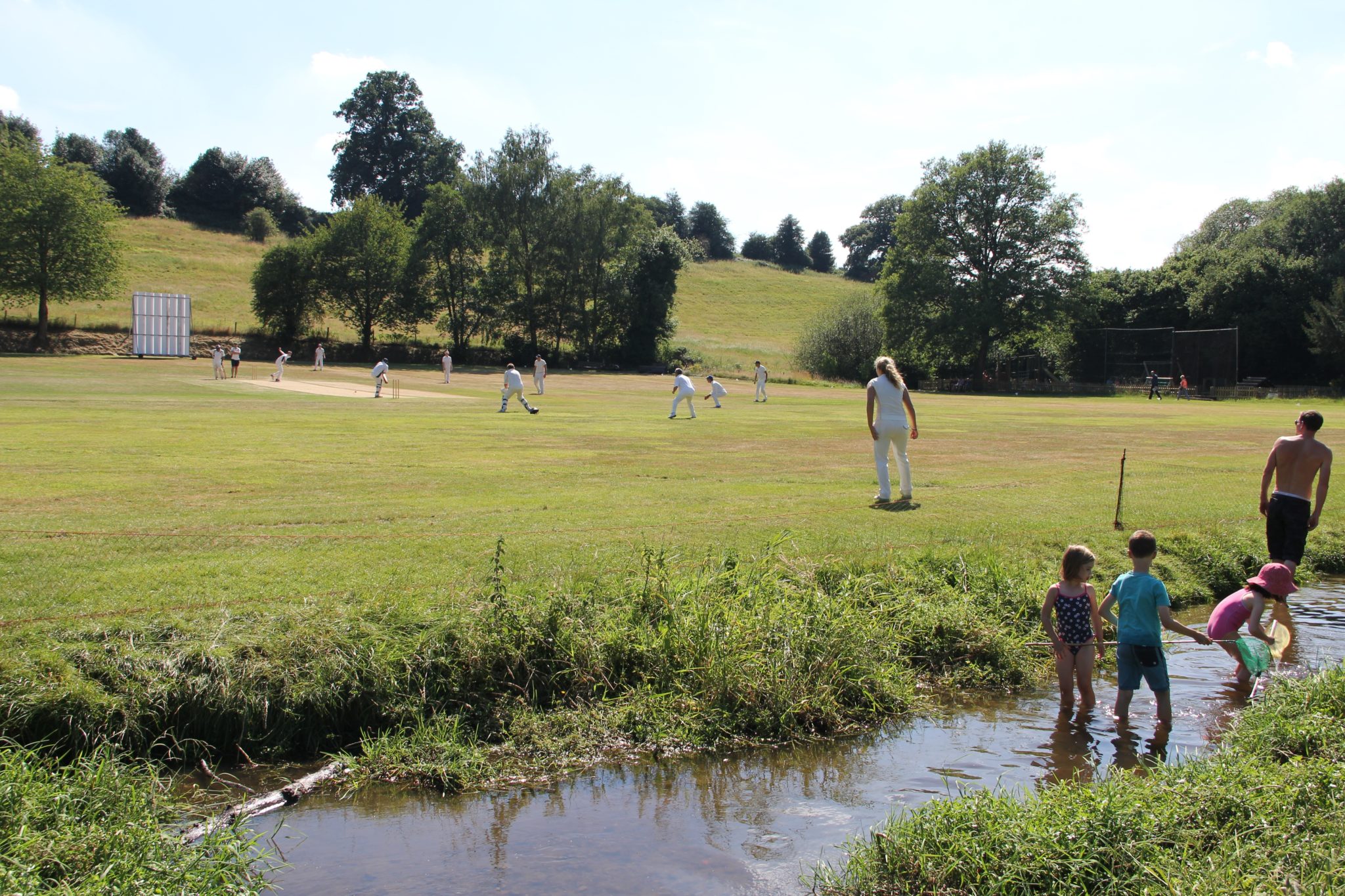
Hit a four here and there’s a good chance the ball will end up very wet in the River Tillingbourne, which forms a natural boundary. Although the club was formed in 1870, it wasn’t until almost a hundred years later that it found its current home on the village green. Club members still dine out on the fact that, back in 1983, the full New Zealand Test side played a friendly here. Around 3,000 spectators turned up to watch such luminaries as Sir Richard Hadlee and Martin Crowe.
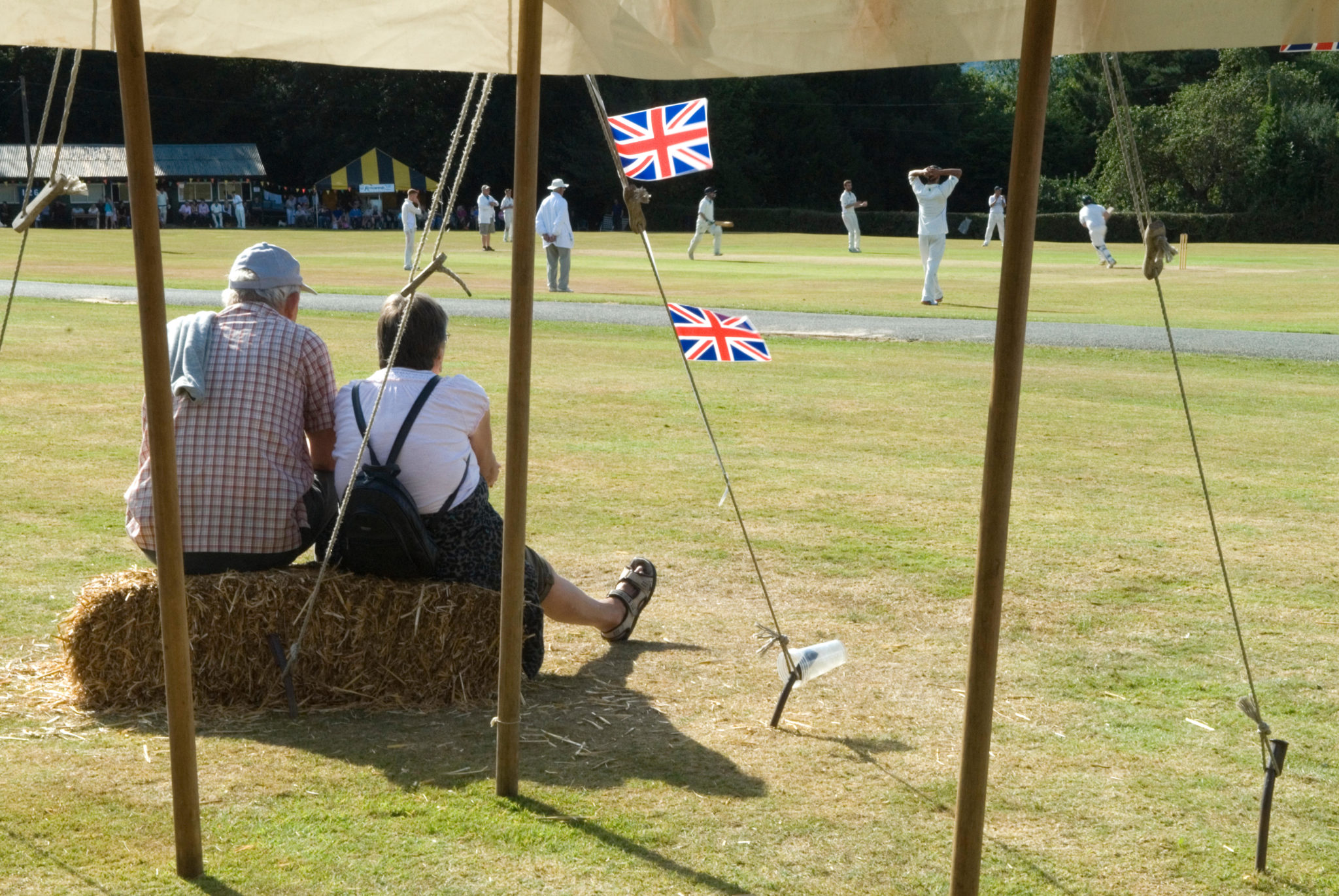
Every year, on the 25th July, the village of Ebernoe stages its Horn Fair Day, the highlight of which is a cricket match between the local club and selected opponents, followed by the ceremonial roasting of an entire sheep. The horns of the grilled beast are presented to the highest-scoring batsman on the winning side. (Though sometimes they are plastic replicas if the real thing is in short supply.) Drivers must remain alert since the road through the village bisects the playing area, and a well-struck shot has been known to dent the bodywork of a passing car.
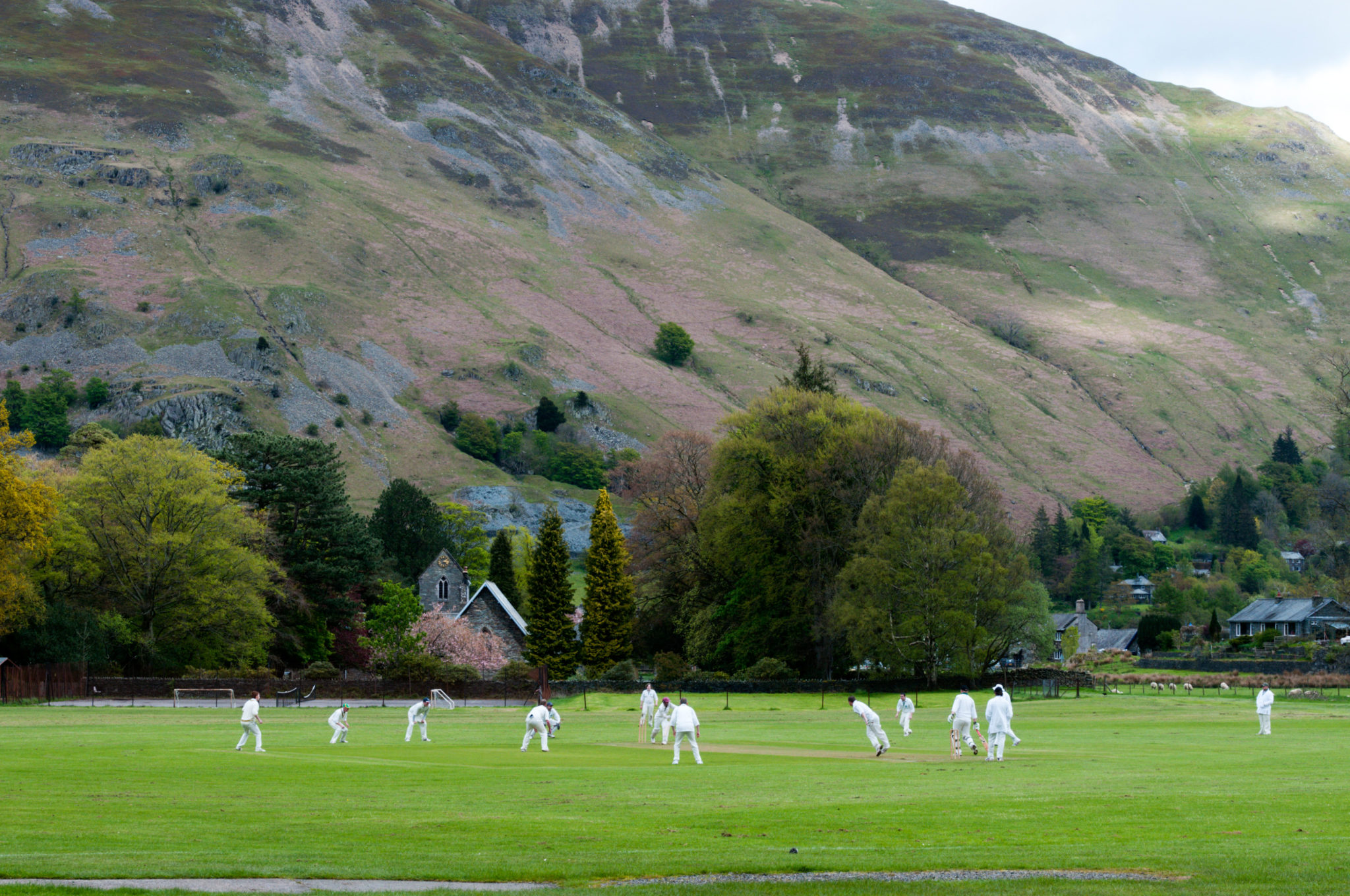
Overlooked by the majestic mountains of the Lake District, this ground is bordered by a wonderful variety of trees including sycamores, oaks, holly, ash and Douglas firs. No wonder the English poet William Wordsworth called it “the prettiest field in England”. Less poetical is the local weather. Indeed, in 2015, Storm Desmond flooded the outfield. The park is also used by mountain rescue services who regularly land their helicopters here, careful to avoid the six pitches of course.
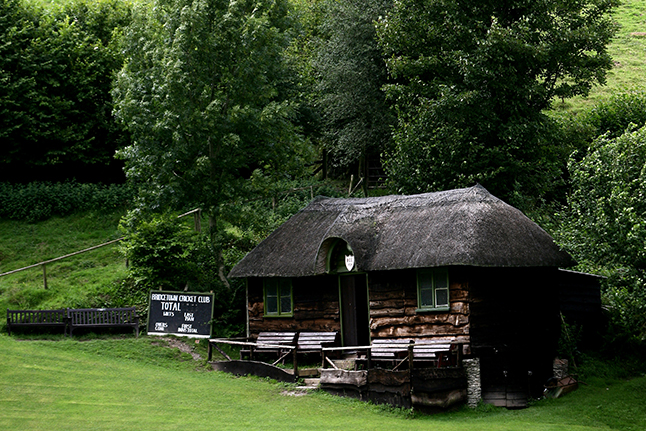
Near a bend in the River Exe, Bridgetown’s cricket ground is surrounded by grazing sheep and woodland. Little has changed since the club was founded in the 1920s. The timbered pavilion still has a thatched roof, while men still use the original privy at the back. Until 2018, when a portable lavatory was finally provided, ladies had to nip to the village pub to answer the call of nature.
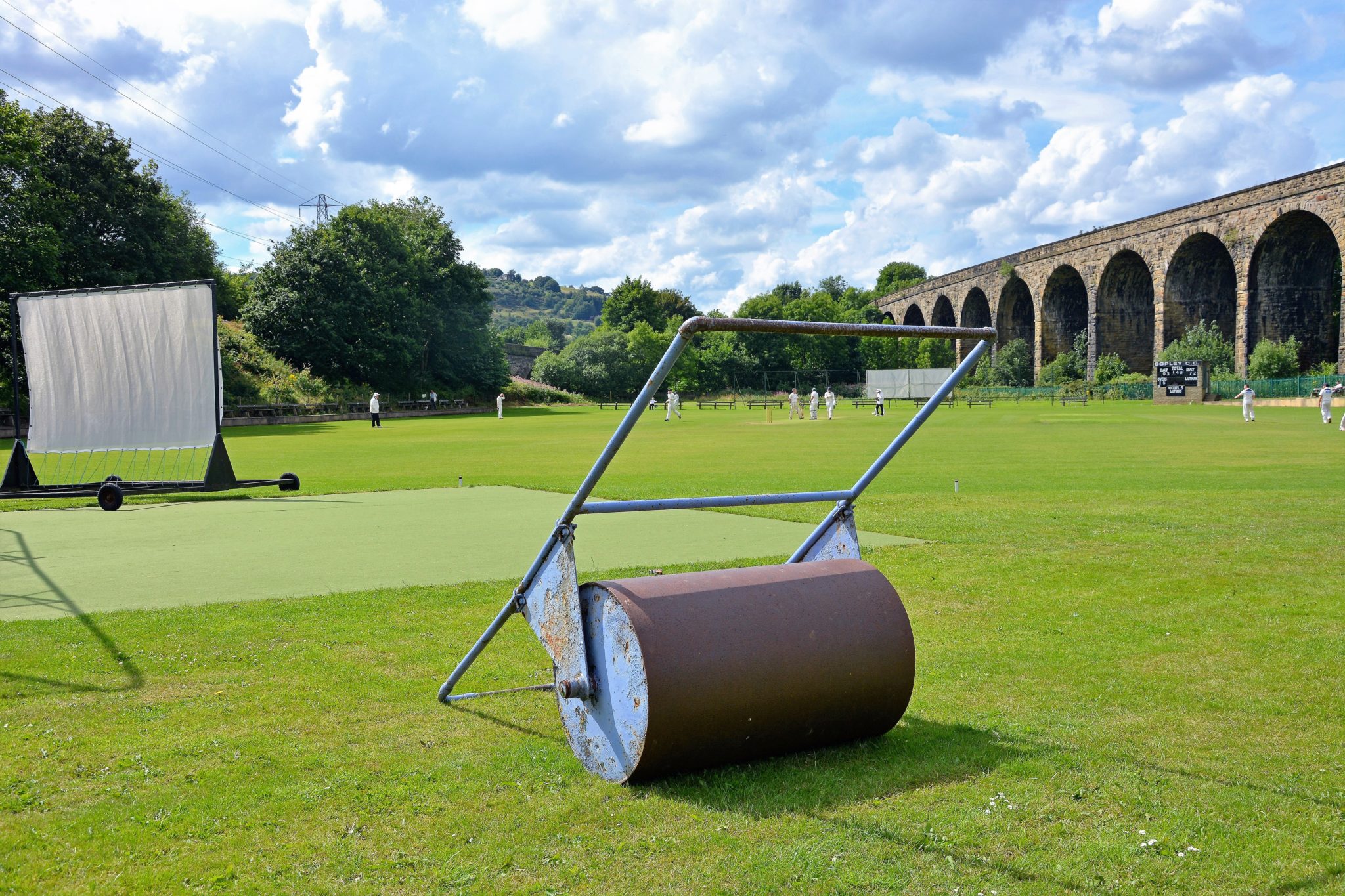
Copley CC has graced this spectacular setting in the shadow of the viaduct over the River Calder since 1880. The trains that thunder by on the Leeds to Manchester line are a regular distraction. The club also has to fend off bouncers regularly bowled by the British weather: severe flooding occurred in 2009 and 2015.
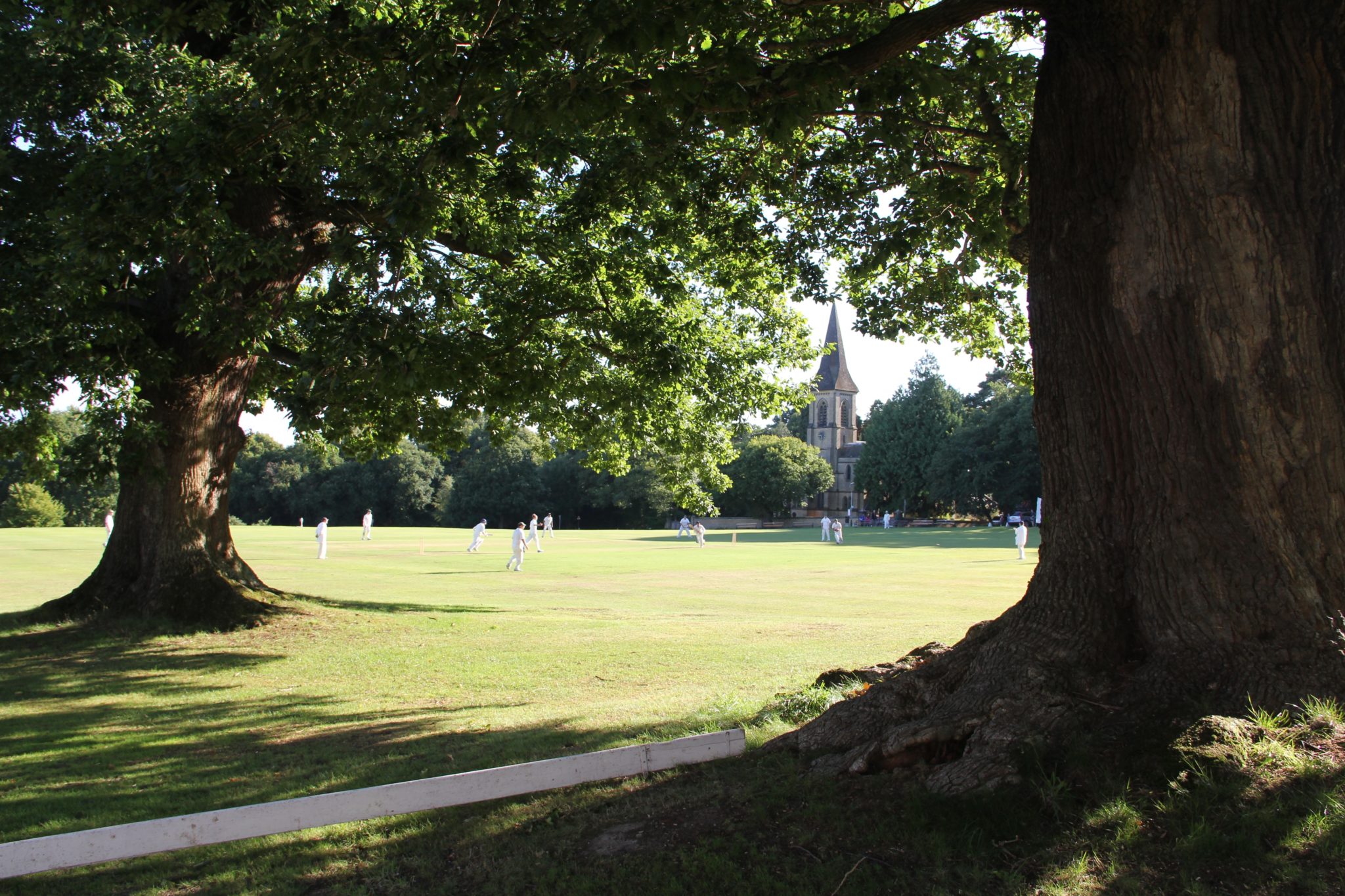
Cricket has been played here since at least 1794. The setting includes a fine common ringed by magnificent mature oaks and a classic 19th century English church whose clock is the club’s official timepiece, even though it runs five minutes slow. The pavilion side of the ground is bordered by a very busy road, forcing the club to hang netting along the boundary. Two trees grow on the pitch, the more distant one earning a six if hit on the full, the nearer one worth four.
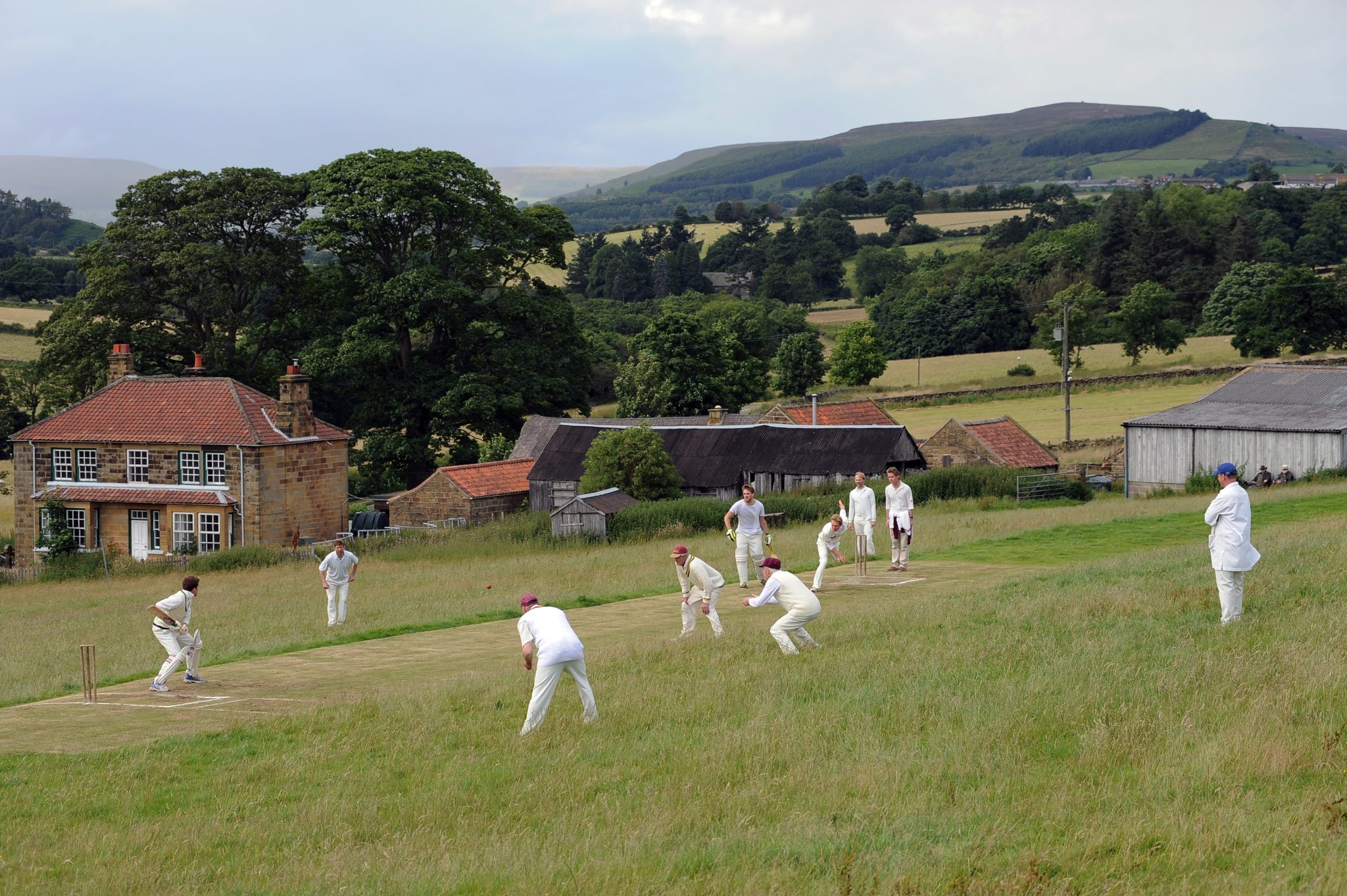
In the world of village cricket, playing areas come in all shapes and sizes, though few are as idiosyncratic as Spout House on the North York Moors. The ground is a working sheep farm with a one-in-seven slope and six-inch high grass. About halfway down is a less steep area just wide enough to fit three pitches. On match days the sheep are ushered into an adjoining field while the team roll the pitch using a magnificent Victorian sandstone roller, possibly the only working model of its kind. The farm’s stone walls form the boundaries. On one of them are memorials to William Ainsley and his grandson William George who between them ran the club for an unbroken span of 138 years.
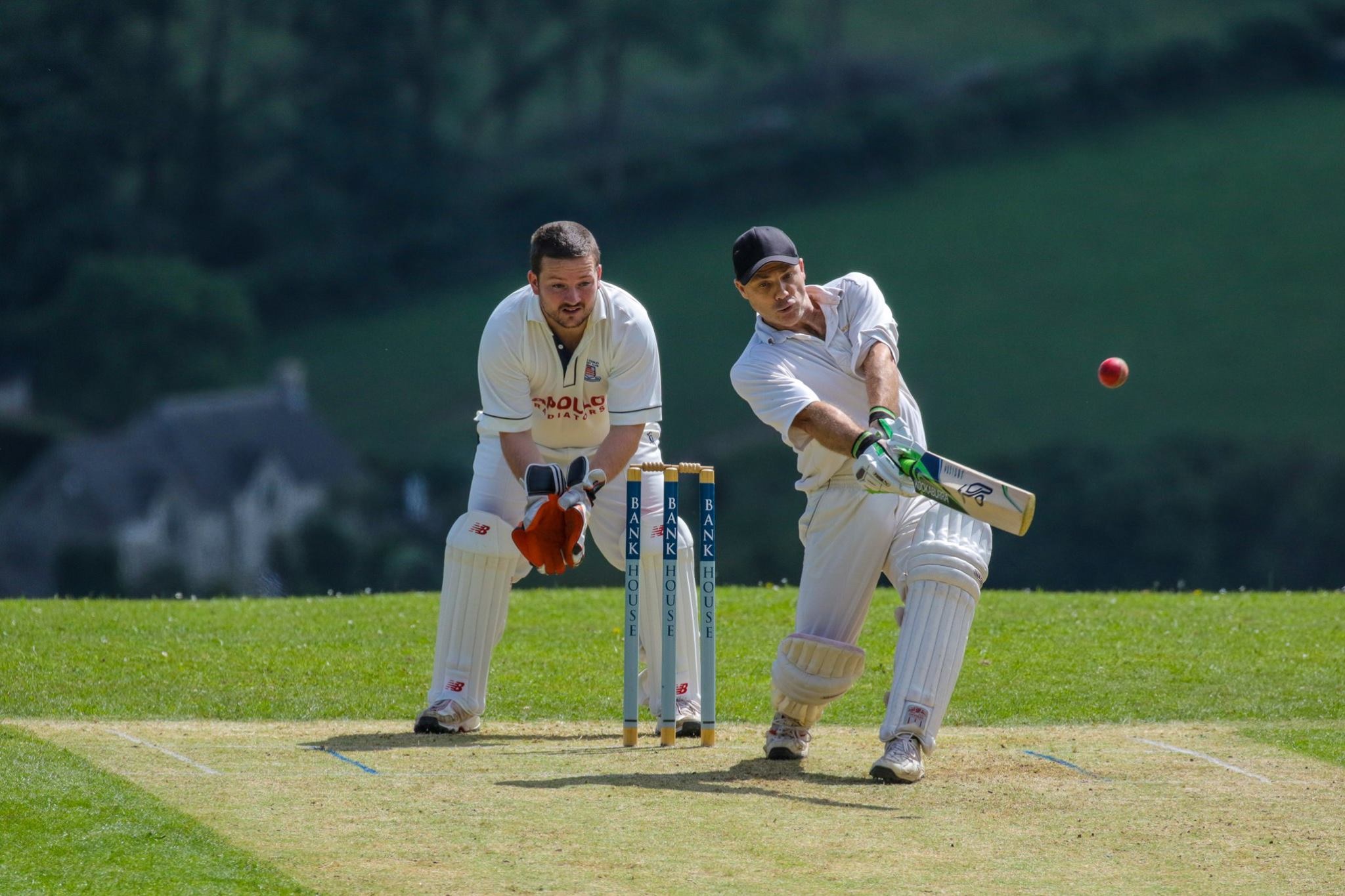
No one would say that Laurie Lee Field, home to Sheepscombe Cricket Club, is the most accessible of grounds. But getting there is definitely worth the effort. Visitors with stout legs and healthy hearts can take the very steep path up from the village pub, the picturesque Butcher’s Arms. Laurie Lee, author of the famous novel Cider With Rosie, was born and bred in the area, and owned the field from 1971 until his death in 1997. He allowed the club to play there rent-free. The field is by no means flat, though, dropping away from the pavilion by as much as 15 feet (nearly five metres) so that long leg fielders on the far side can see only the top half of the batsman.
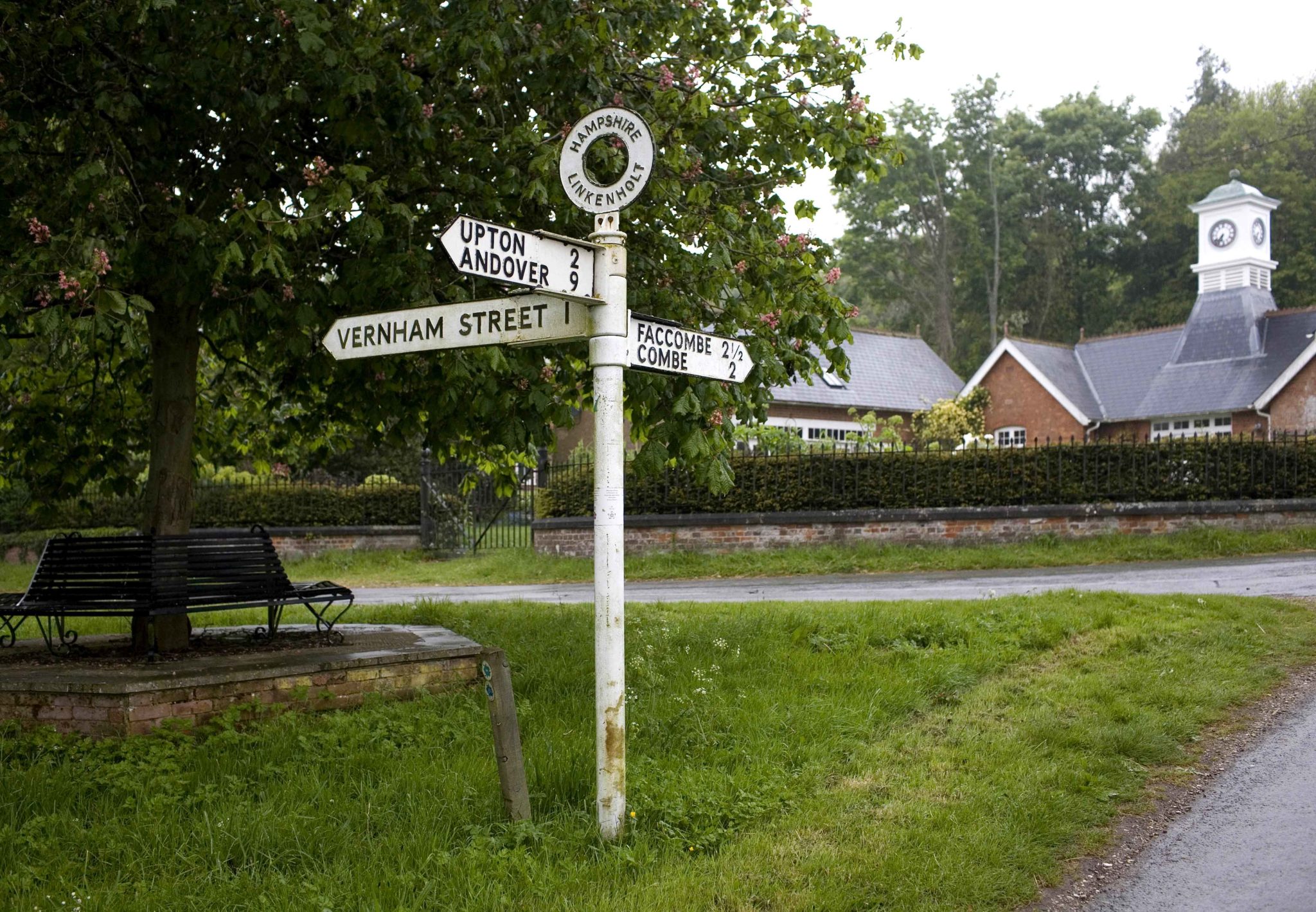
Linkenholt may well be the smallest village in the country with its own cricket club. There are only 30 houses, no shops and just over 50 inhabitants. The nearest pub is two villages away. Another oddity – although a visitor would never know – is that the entire village (bar the church) has been privately owned since the 16th century. When cricket restarted after World War II, 14-year-old Elsie Stockley volunteered to buy cakes for the tea interval during the first match. Over 70 years later, Elsie is still an active club member. She has held virtually every job in the club, except chairman, and even married one of the players.

If you don’t mind your cricket with occasional intrusions by fallow deer, you’ll be charmed by Sennocke Cricket Club, in Knole Park, home of the Sackville family. The animals have right of way both on the park road and in the playing area, so if they like the look of the grass at wide mid-off, you simply have to wait until they’ve finished grazing. Medieval buildings edge the boundary, and the pine tree in the outfield earns four if struck full toss or on the bounce. Requests from locals that their posthumous ashes should be spread beneath the tree are not unknown.
Remarkable Village Cricket Grounds by Brian Levison is published by Pavilion Books.
Lorem ipsum dolor sit amet consectetur, adipisicing elit. Non facere corporis et expedita sit nam amet aut necessitatibus at dolore enim quis impedit eius libero, harum tempore laboriosam dolor cumque.
Lorem, ipsum dolor sit amet consectetur adipisicing elit. Illo temporibus vero veritatis eveniet, placeat dolorem sunt at provident tenetur omnis, dicta exercitationem. Expedita quod aspernatur molestias eum? Totam, incidunt quos.